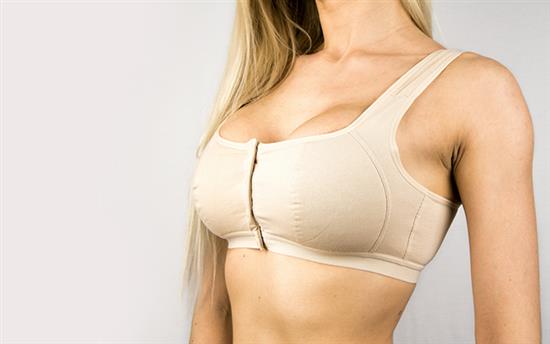
Breast augmentation remains the most popular and highly performed surgical cosmetic procedure of all, and as a result, the industry is constantly growing, developing and advancing. According to a roundup in the media lately, there are several trends developing in the breast surgery world – things that might be niche now but have scope to grow in popularity over the coming years.
One potential development in breast augmentation is for the procedure to be performed under local anaesthetic, as opposed to a general anaesthetic. This is something that’s only preferred by a few surgeons at the moment, but there is potential for it to become more popular, not least due to the efficacy of local anaesthetic nowadays.
“A special cannula is introduced through a small cut along the crease below the breast to inject local anaesthetic,” said Mr. Shaanan of the Phi Clinic. “Once the area is numb, the implants can be inserted.”
Experts also warn, though, that only women with small natural breasts who are seeking small implants are suitable candidates for this nature of breast surgery. However, Mr Chana’s opinion is that this can be quite an uncomfortable procedure when performed under local anaesthetic and quite heavy sedation is needed.
The degree of sedation means that the distinction between sedation and a general anaesthetic is so small that patients may as well be asleep during the procedure which in fact is safer than very heavy sedation which is usually given in clinics which do not have full anaesthetic facilities.
It is not surprising then that usually, the surgeons that promote such techniques are those who do not have access to the safety of a fully equipped large hospital. Also, the tendency would be for every patient to have implants placed on top of the muscle since under the muscle is not possible with a local anaesthetic.
There’s also rumour of ultra-light implants, which would improve comfort as well as the practicality of breast augmentation surgery for many women.
Marc Pacifico, BAAPS spokesperson and plastic surgeon, said:
“I think they will transform everything, from the way we do implants to the lifespan and complication rates. Nobody knows when they will actually be available but I think they’re just around the corner.”
One other problem – that may be soon to be resolved – identified by Mr Pacifico is the visibility of the implant post-augmentation. Sometimes after a breast enhancement, the outline of the implant will be visible, or the outer shell will ripple leaving an uneven texture to the augmented breast.
“Slimmer women are more at risk of this because they have less fat to cover the implant. If there are any imperfections after breast augmentation, one new option is the ‘icing on the cake’ technique where a small amount of fat is harvested from the thighs or the stomach then grafted on to create an extra layer between the implant and the woman’s own breast tissue.”
Chana already performs fat injections for breast augmentation. Across the pond, there are developments for breast lift procedures occurring, which – in time – may become popular over here in the UK, too. GalaFLEX has recently been approved by the FDA; the mesh-like substance works as a reinforcement for breast lifts to avoid postoperative drooping or decline of results.
Over a period of 12-18 months, the mesh is naturally absorbed by the body, leaving behind stronger breast tissue that has formed around it. However, the long-term results still need to be verified by independent studies.
Of course, all of these advancements are only effective when performed by a plastic surgeon in the right context and environment – as is all breast surgery. Developments in the industry are all well and good, but the most important aspect of a quality breast procedure remains the same – choosing a good surgeon and having a thorough consultation prior to treatment.
Share this page...
